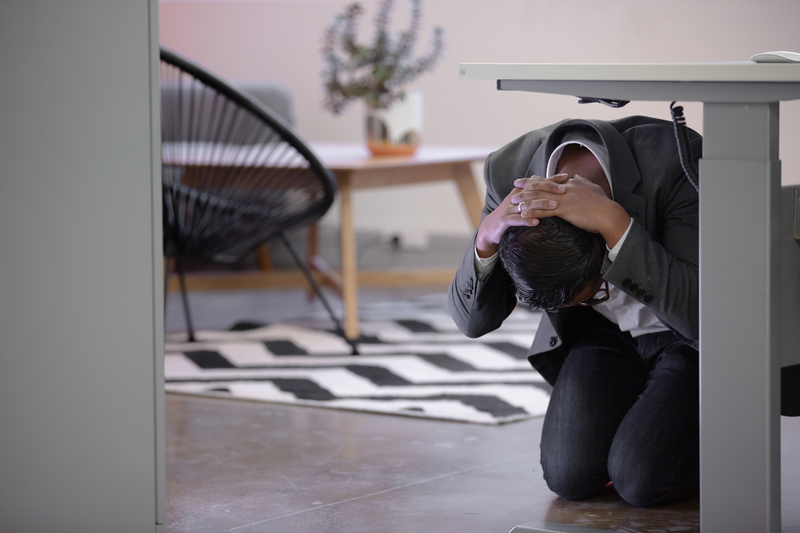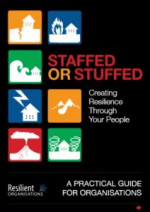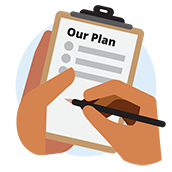Get your work ready for an emergencyWhakaritea tō wāhi mahi mō te ohotata
Emergencies can happen anytime, including during business hours. You can’t predict when they will happen, but you can take actions to make your business more prepared.
On this page
Identify the risks to your business and staff
Find out what the risks are and how they can impact on your business. Risks include natural hazards, health emergencies and utility failures.
If you have staff, talk to them about the risks they think are most relevant to your business.

Keeping everyone healthy and safe at work doesn’t mean buying expensive equipment and doing lots of paperwork. It does mean taking a proactive approach and getting everyone at work involved.
Make an emergency plan for your business
Businesses have an obligation to be prepared for an emergency. In most cases we can’t predict when an emergency will happen. But we can make plans to make sure our staff are safe, our financial and personal losses are reduced and we are able to get back to business as soon as possible.
Your plan should include the following.
- Emergency procedures for fire, earthquake, tsunami and other hazards.
- Assembly points, wardens and first aid training.
- How to contact staff, suppliers, clients and insurance providers.
- Alternative arrangements if you are unable to access your premises, files, etc.
Talk to your disabled staff. Find out what support they might need if there's an emergency. Also think about how you might need to help any visitors who have a disability.

Use this guide on what to include in your emergency planning from business.govt.nz.
Do not run outside during an earthquake
It is frightening to stay in a building after an earthquake, but it is much safer than going outside.
When you eventually evacuate, take your wallet, coat, bag and grab bag. You are more vulnerable if you leave these things behind. Open areas with no tall buildings or power lines nearby are the best evacuation assembly areas.

Look after your staff
As an employer, you have a duty of care to your staff, including caring for them during and after emergencies.
Start by involving your staff in identifying risks and making an emergency plan. Talk to them about what they, and their whānau, would need to get through an emergency.
Make sure your staff have personal workplace emergency plans so they know who to contact at work in an emergency and have a plan to get home safely.

Find advice for looking after staff in an emergency.

Have staff fill in a personal workplace emergency plan to plan for an emergency during work hours.
Provide supplies for your staff
In an emergency, your staff may be stuck at work or unable to take transport home for a day or more.
Make sure you have enough supplies for everyone onsite for three days. This should include for visitors too.
-
Damaged buildings
You may need dust masks (rated P2 or N95), work gloves, hard hats or tools such as wrecking bars and sledge hammers.
Staff can't leave the building
You’ll need food and water (at least three litres per person) for three days or more, sanitary items, etc.
Staff can't take their usual transport to get home
Encourage staff to have supplies in their work grab bags in case they need to walk home or to their meeting place. Make sure they have household plans with their families.
People are seriously injured
You may have to care for people with serious injuries until help arrives. Make sure you have blankets, stretchers, a complete first aid kit, etc.
-
These suggestions for equipment and food are guidelines only. What you need will depend on the number of staff, the nature of your business, the type of building, and your location.
- Blanket, foil
- Blanket, wool
- Stretcher, foam
- Stretcher, board
- Rope, poly 30m
- Rope, sisal 12m
- Torch, batteries
- D batteries
- Radio, batteries
- AA batteries
- Gloves/debris
- Dust mask (rated P2 or N95)
- Goggles
- Water
- Water tablets
- Hard hat
- Bucket
- Plastic bin bags
- Wrecking bar
- Saw, wood
- Saw, hack
- Sledge hammer
- Cutter/pliers
- Axe
- CD first aid kit
- Meths stove for water
- 3 ltr billy for water
- Matches (pkt)
- Lighter
- Disposable gloves
- Toilet paper
- Sanitary needs
- Broom
- Brush/pan
- Disinfectant
- Mouth guards
- Light sticks
-
Example food requirements for 25 people for three days
Ensure basic food supplies are also in the cabinets. Food items should be checked annually. Replace any food that is expired or needs replacing.
The following is a suggested menu. The quantities are quite small and may not be suitable for people doing physical labour.
Example: DAY 1
- Baked beans, 10 x 820g cans
- Cream corn, 10 x 440g cans
- Raisins, 4 x 12 mini box packet
- Muesli bars, 3 x 8 bar box
Example: DAY 2
- Tuna in water, 10 x 425g cans
- Potato salad, 10 x 310g cans
- Raisins, 4 x 12 mini box packet
- Muesli bars, 3 x 8 bar box
Example: DAY 3
- Spaghetti, 10 x 820g cans
- Green beans, 10 x 425g cans
- Raisins, 4 x 12 mini box packet
- Muesli bars, 3 x 8 bar box
Additional Food/supplies
- Barley sugars, 9 packets
- Chocolate, 9 king size blocks
- Paper plates, 125 x 25cm
- Plastic forks, 100
- Methylated spirits 1 x 1 litre
- Can opener x 4
- Large garbage bags (for sanitation) 25
Build relationships
Get involved in your local business community. Get to know your local Chamber of Commerce, industry organisations, business neighbours, competitors and suppliers. Talk to them about their emergency and business continuity plans. In an emergency, you may be able to help each other get back up and running faster.

Create contingency plans
Develop a contingency plan for your whole business. It should include staff, information, assets, customers, suppliers and distribution channels.
- Identify your core business needs, and how you’d manage in an emergency.
- Back up your data.
- Know how to contact staff and suppliers.
- Test your back up systems.

Follow the Shut Happens task list to create contingency plans for your business.

Continuity and contingency planning is about being prepared for all types of disruptions. Use the business.govt.nz step-by-step guide to get your plan sorted. It’s vital to your business’s survival.
Prepare a plan for your farm or lifestyle block
Rural communities, businesses and individuals need to adapt and build resilience to emergencies.
Your animals are your responsibility. You need to include them in your emergency planning and preparation. Failing to plan for them puts lives at risk.

The Ministry for Primary Industries (MPI) has advice for preparing a plan for your animals. It includes checklists for different types of animals and different emergencies. Work through the checklists to develop your plan.
Get Ready
There are simple steps you can take to make sure you and your whānau are ready to get through.


